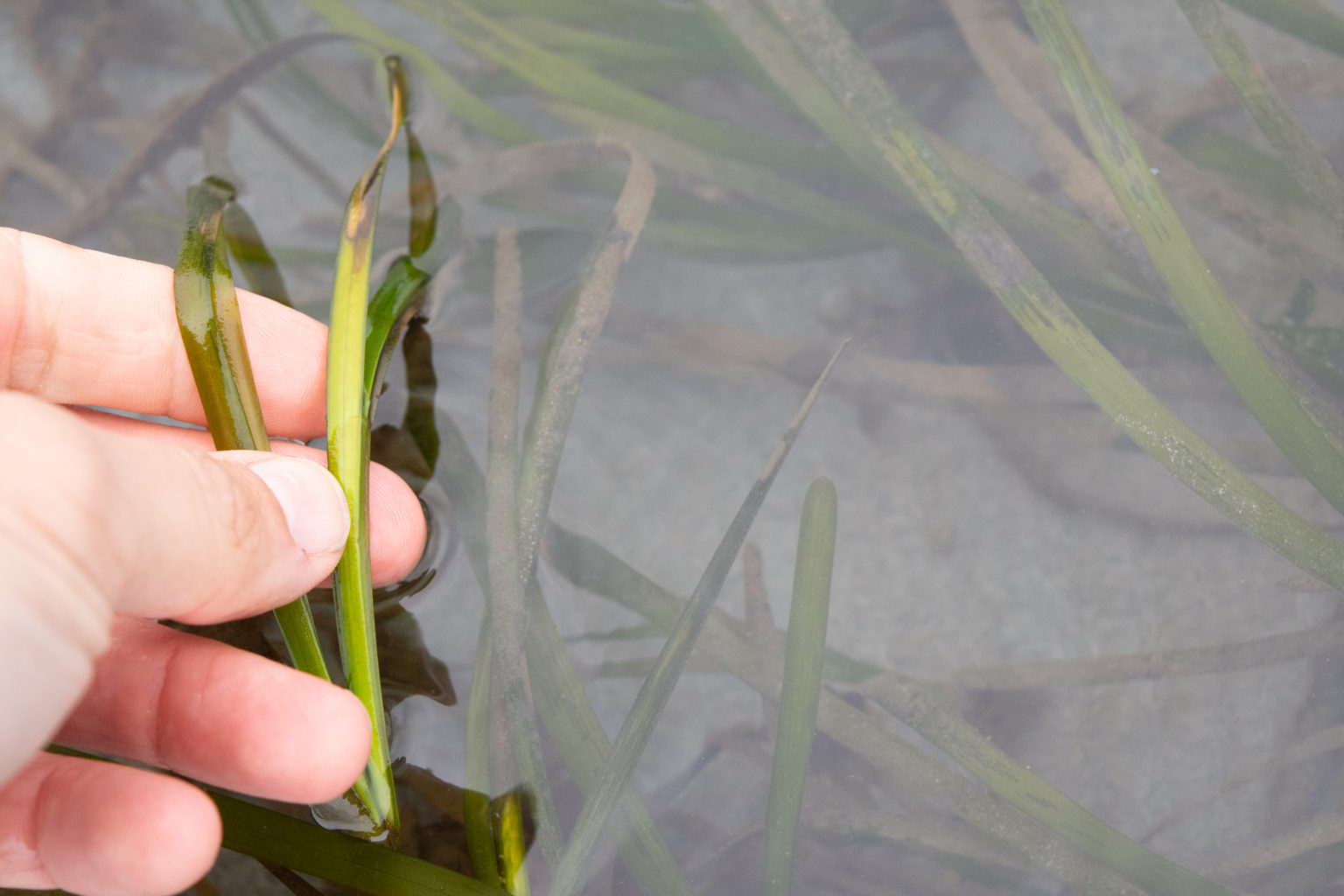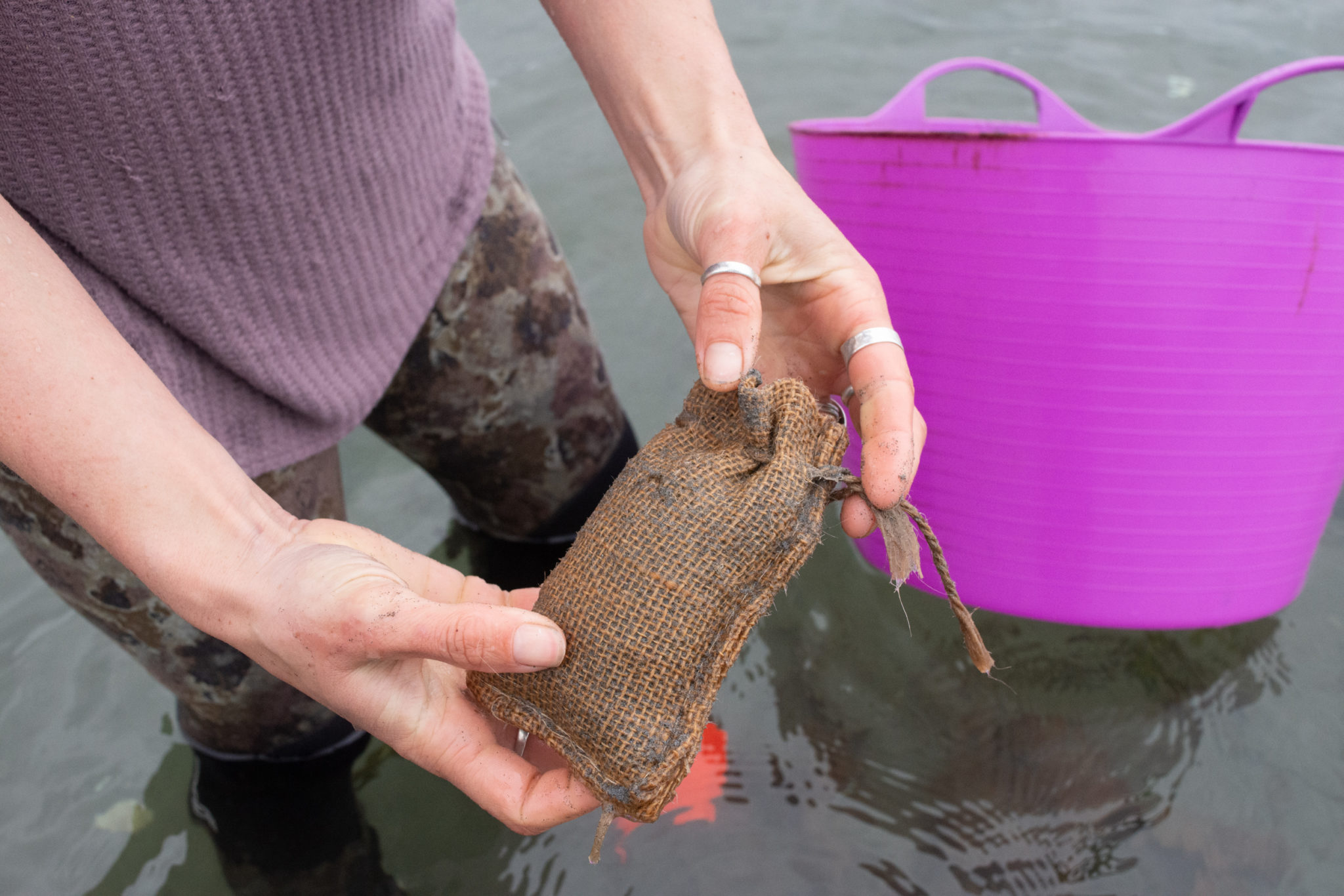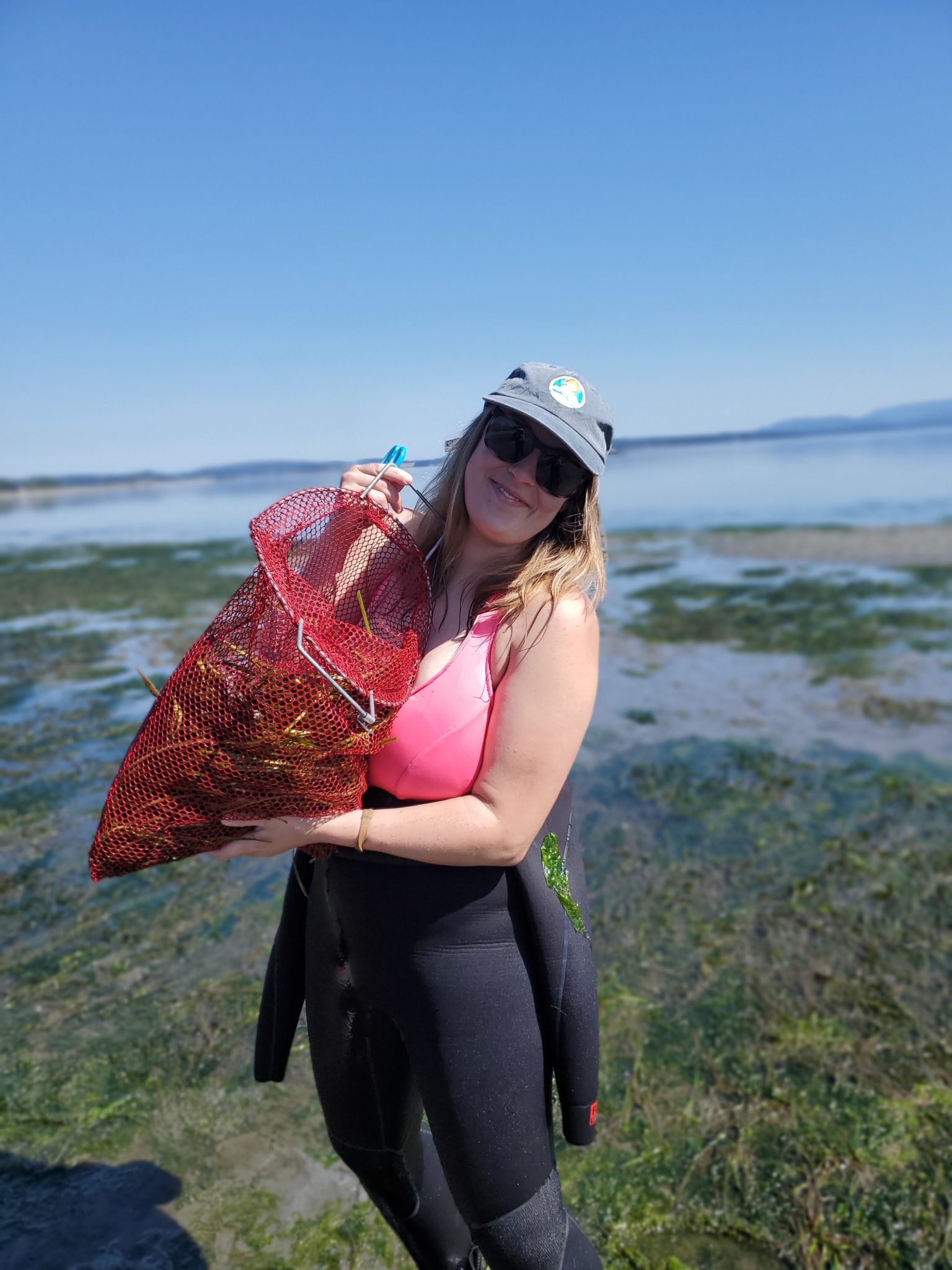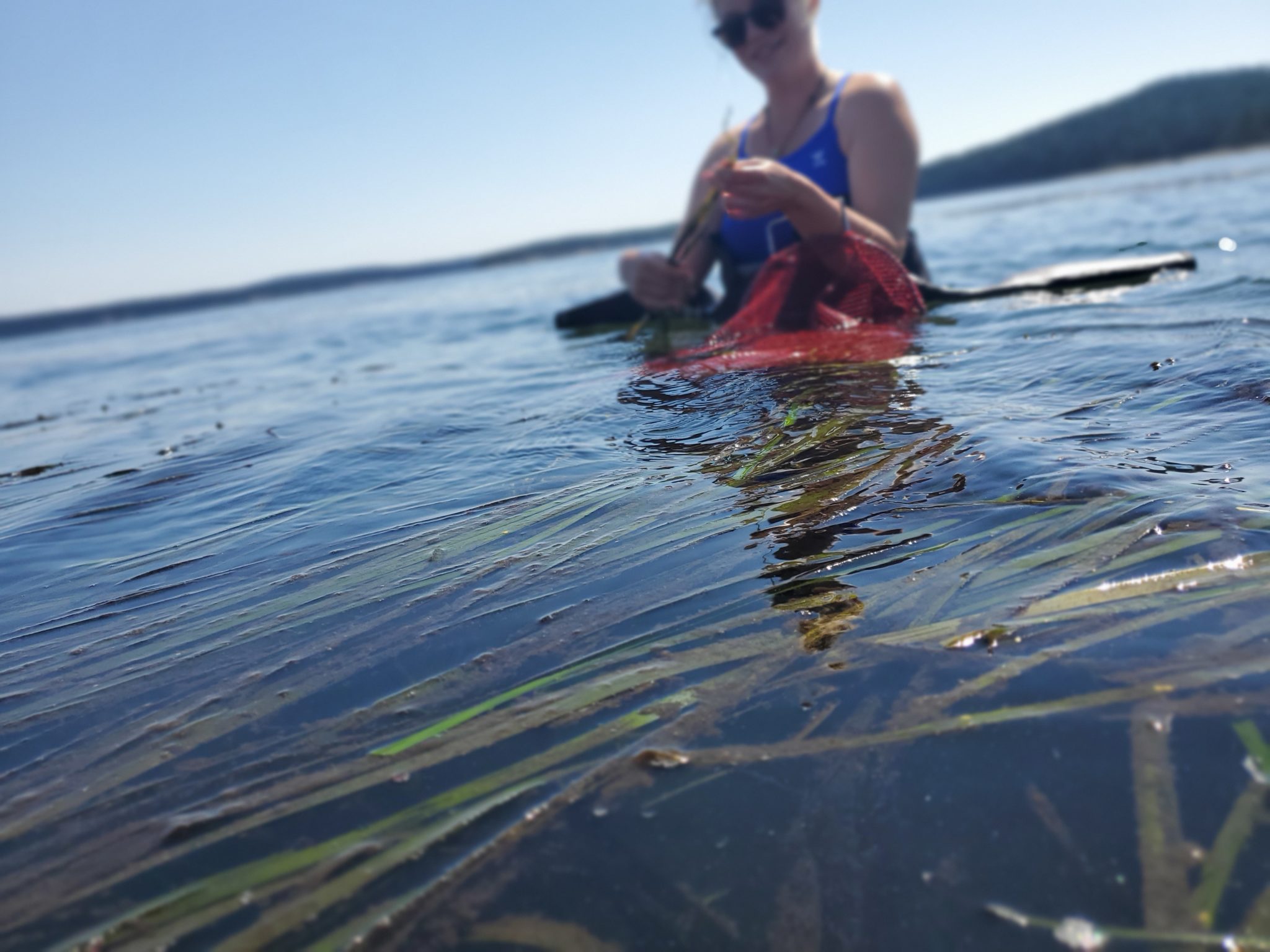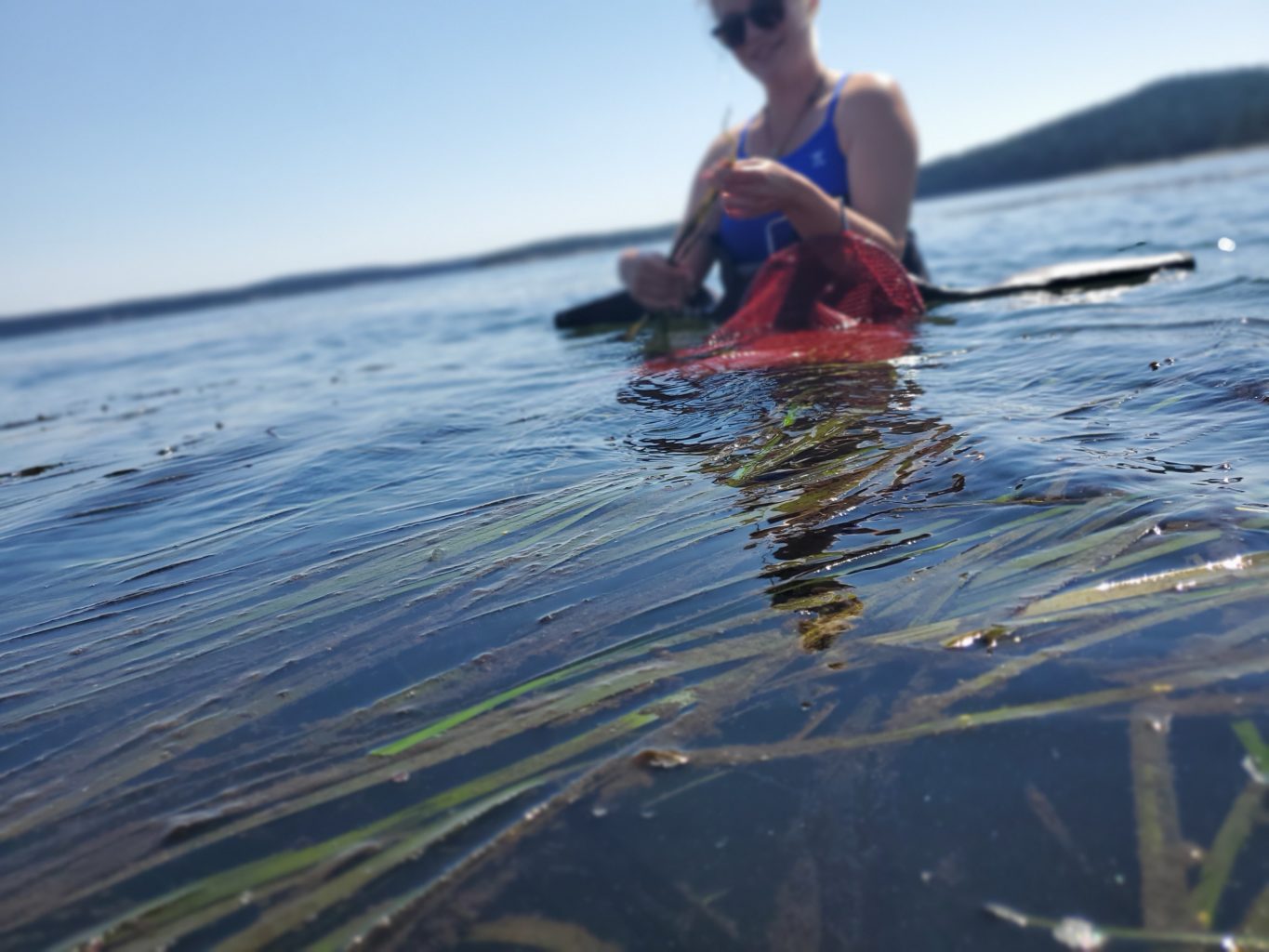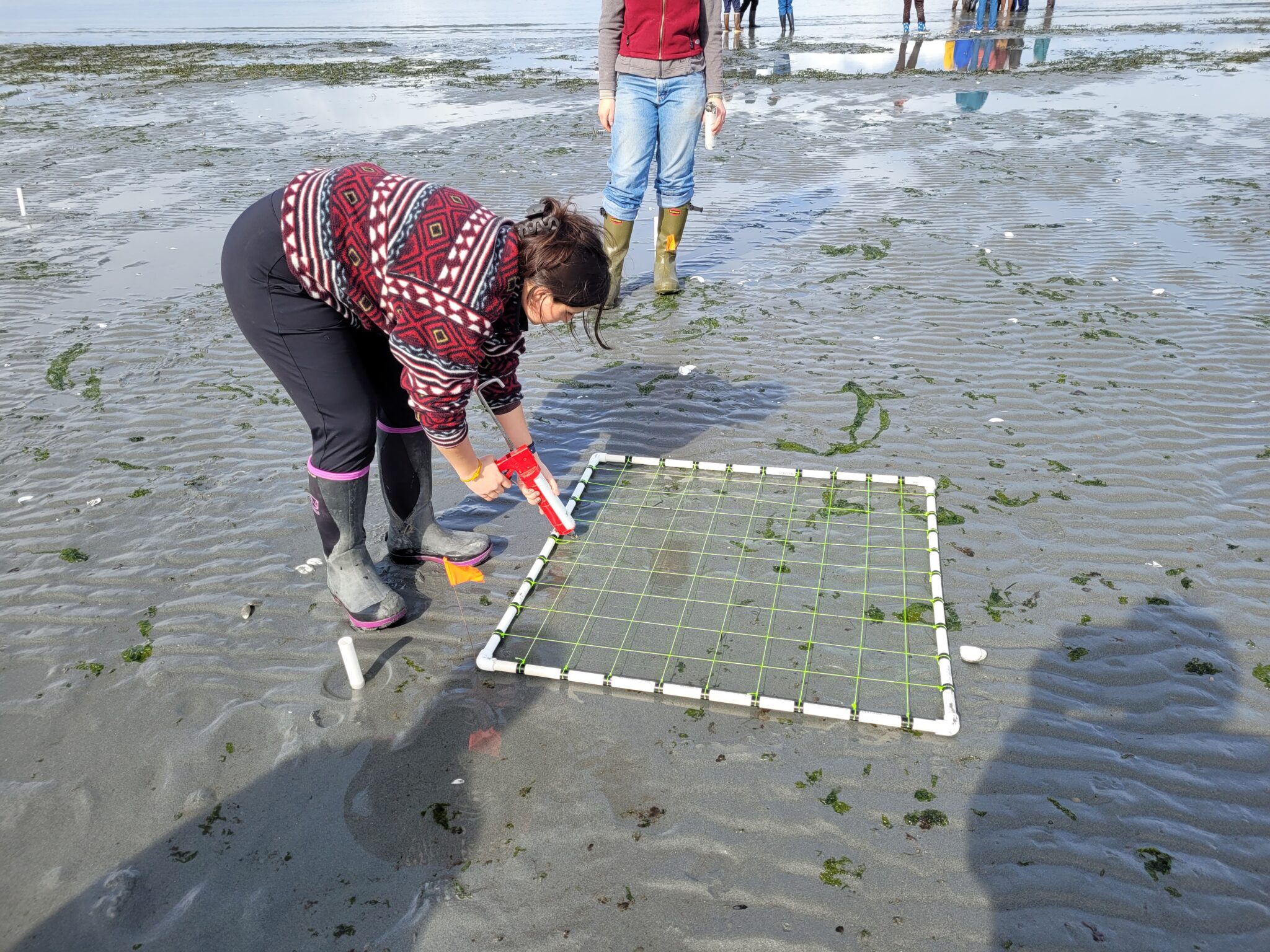This project is building on the success of Seacology’s first eelgrass restoration effort in the Salish Sea, which began in 2020. Our project partners have found seedlings where they earlier dispersed seeds and are monitoring their growth and spread.
This second restoration project uses several methods to disperse seeds, including one technique our project partners during the first project. This diversified approach improves the chances of achieving the ultimate goal, which is large-scale eelgrass restoration in the Salish Sea.
Restoration is crucial because eelgrass, the dominant seagrass species in the Pacific Northwest, began to disappear throughout the San Juan Islands in Puget Sound in the early 2000s. Seagrass loss is a disturbing worldwide phenomenon, caused by by development, runoff, boat anchors, and disease.
Although the replanting area itself is small, eelgrass plants, once they become rooted, spread into unvegetated areas. Underground rhizomes grow out from the original plants, slowly expanding the seagrass bed. So, over time, our partners expect the entire restoration site—and adjacent areas—to be repopulated with eelgrass, restoring the ecosystems that have been lost.
The loss of seagrass disrupted the entire marine ecosystem, literally from the bottom up. Without eelgrass in Puget Sound, the herring population declines; without herring to eat, the salmon population declines; and without salmon to eat, the orca population declines. There are wider effects as well. The underwater meadows formed by expanding eelgrass plants transform unvegetated bottom into a rich habitat that supports a diverse assemblage of finfish, crustaceans, and waterfowl. They stabilize the ocean bottom, reducing erosion and storm damage. Because seagrasses trap fine particles and filter runoff, they improve water quality.
Seagrass beds also have global significance: An acre of seagrass can store about three times as much carbon as an acre of rainforest, making seagrass a key part of addressing rapid climate change. California scientists recently discovered that seagrass meadows also reduce water acidity (which rises as carbon dioxide levels rise), by up to 30 percent, with profound effects on coastal ecosystems.



